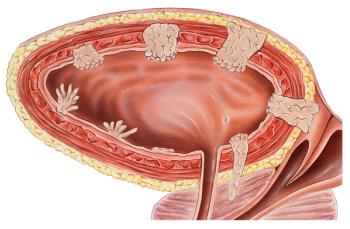
Praluzatamab Ravtansine Meets Primary End Point in HR+/HER2–Non-Amplified Breast Cancer
The phase 2 CTMX-2009-002 trial met its primary end point of confirmed objective response greater than 10% for patients with hormone receptor–positive, HER2–non-amplified breast cancer being treated with praluzatamab ravtansine.
Treatment with praluzatamab ravtansine met the primary end point of confirmed objective response (ORR) of greater than 10% confirmed by central radiology review in the phase 2 CTMX-2009-002 trial (NCT04596150) in patients with hormone receptor (HR)–positive, HER2–non-amplified breast cancer, according to a press release from CytomX Therapeutics.
A total of 47 patients with HR-positive, HER2–non-amplified breast cancer unselected for CD166 expression were evaluable for the primary end point at the data cutoff of May 13, 2022. At 24 weeks, the clinical benefit rate (CBR) was 40%, and the median progression-free survival (PFS) was 2.6 months. The ORR was 15%.
Praluzatamab ravtansine was designed as a conditionally activated antibody drug conjugate of a CD166-directed human monoclonal antibody that is conjugated to the maytansinoid DM4. Platform technology that is used to mask the peptide and to cover and block the cellular binding region of the antibody, which tethers to the antibody through a protease-cleavable linker. The masked peptide can be removed in a protease-rich tumor microenvironment which allows the antibody drug conjugate to engage and deliver the toxic DM4 payload.
“These results from our phase 2 evaluation of praluzatamab ravtansine support single-agent activity of this novel drug candidate in [HR]-positive breast cancer where significant unmet need remains,” Sean McCarthy, PhD, chief executive officer and chairman at CytomX Therapeutics, said in the press release. “However, we do not believe the median progression-free survival at 7 mg/kg supports further evaluation at this dose. While we are encouraged by the emerging safety profile of 6 mg/kg, we do not plan to further advance this program alone given current financial market conditions and will be seeking a partnership.”
The trial had an estimated enrollment of 200 patients in arm A who have inoperable and locally advanced or metastatic HR-positive, HER2–non-amplified breast cancer. Regardless of CD166 expression, patients still received 0 to 2 prior cytotoxic chemotherapies in the locally advanced or metastatic setting.
In the trial, arm A consisted of those with HR-positive, HER2–non-amplified breast cancer, and arm B and C consisted of those with triple-negative breast cancer (TNBC); arm B did not pass the protocol-defined futility boundary, leading to discontinuation of enrolling patients with TNBC into arms B and C. Patients in arm A received 7 mg/kg of praluzatamab ravtansine every 3 weeks. In arm B, patients with inoperable, locally advanced, or metastatic TNBC received 6 mg/kg or 7 mg/kg every 3 weeks of praluzatamab ravtansine and had 1 to 3 prior lines of therapy regardless of CD166 expression. Additionally, in arm C those with PD-L1–positive TNBC received praluzatamab ravtansine at 6 mg/kg every 3 weeks plus pacmilimab at 1200 mg every 3 weeks.
Secondary end points included investigator-assessed PFS, duration of response, overall survival, and CBR at 16 and 24 weeks.
Inclusion criteria included having measurable disease via RECIST 1.1, being 18 years or older, having an ECOG performance status of 0 or 1, and adequate baseline laboratory values. Exclusion criteria included having a history of malignancy that was active within 2 years, untreated symptomatic brain and/or leptomeningeal metastases, and unresolved prior therapy with acute toxicity of more than grade 1.
In arm A, patients experienced high-grade ocular or neuropathic toxicities or toxicities resulting in dose reductions. A total of 30% of patients discontinued treatment. Moreover, 15% of patients discontinued due to grade 3 or higher ocular toxicity and 10% discontented due to neuropathic toxicities.
“In this phase 2 study, praluzatamab ravtansine showed single-agent activity in an unselected population of patients with advanced HR+/HER2–non-amplified breast cancer; additional clinical studies at 6 mg/kg are warranted,” Kathy D. Miller, MD, Ballvé Lantero professor of oncology at Indiana University Simon Comprehensive Cancer Center, concluded.
Reference
CytomX Therapeutics announces phase 2 results for praluzatamab ravtansine in breast cancer. News Release. CytomX Therapeutics. July 6, 2022. Accessed July 8, 2022. https://bit.ly/3am127V
Newsletter
Stay up to date on recent advances in the multidisciplinary approach to cancer.


























































































